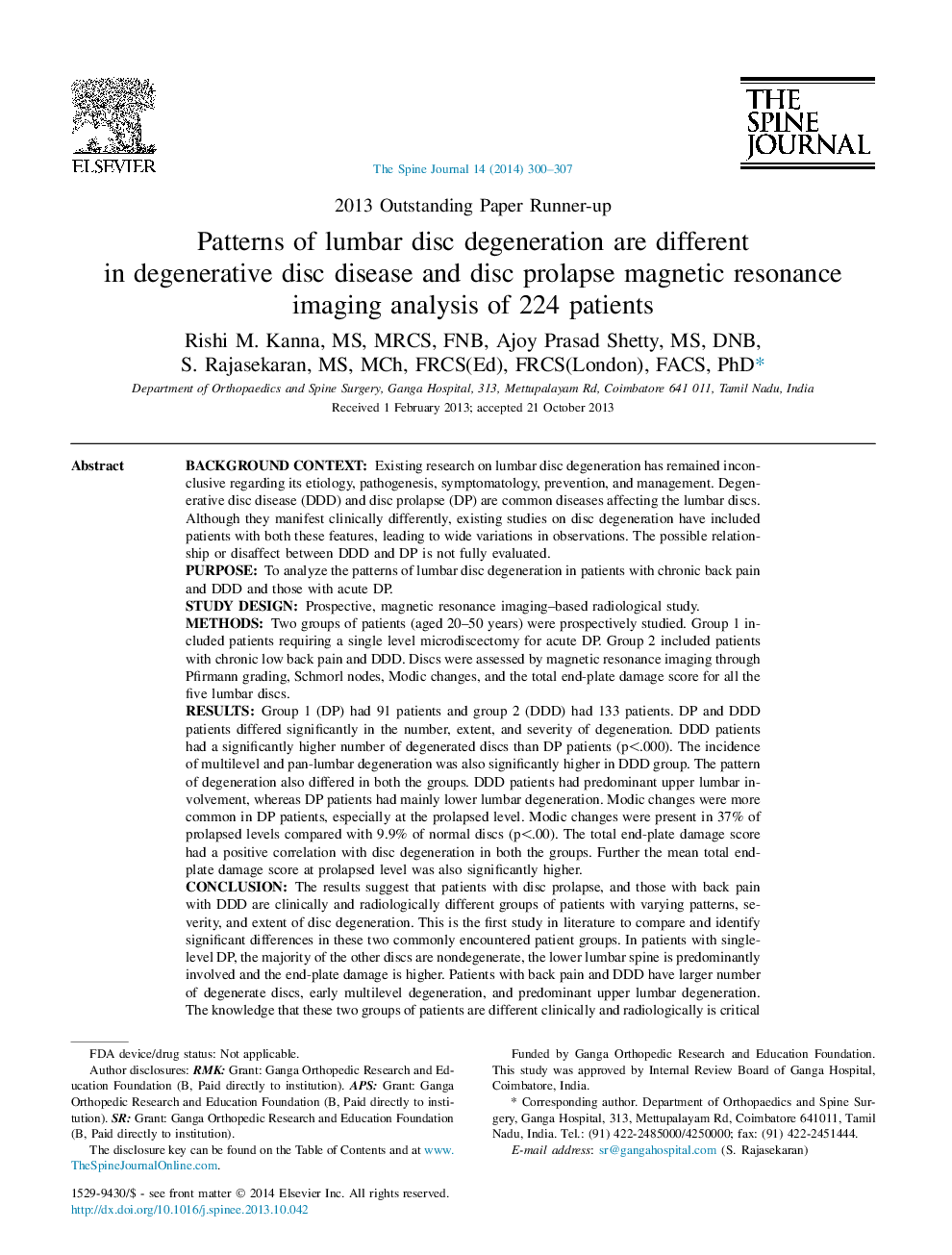| کد مقاله | کد نشریه | سال انتشار | مقاله انگلیسی | نسخه تمام متن |
|---|---|---|---|---|
| 6212887 | 1268605 | 2014 | 8 صفحه PDF | دانلود رایگان |
Background contextExisting research on lumbar disc degeneration has remained inconclusive regarding its etiology, pathogenesis, symptomatology, prevention, and management. Degenerative disc disease (DDD) and disc prolapse (DP) are common diseases affecting the lumbar discs. Although they manifest clinically differently, existing studies on disc degeneration have included patients with both these features, leading to wide variations in observations. The possible relationship or disaffect between DDD and DP is not fully evaluated.PurposeTo analyze the patterns of lumbar disc degeneration in patients with chronic back pain and DDD and those with acute DP.Study designProspective, magnetic resonance imaging-based radiological study.MethodsTwo groups of patients (aged 20-50 years) were prospectively studied. Group 1 included patients requiring a single level microdiscectomy for acute DP. Group 2 included patients with chronic low back pain and DDD. Discs were assessed by magnetic resonance imaging through Pfirmann grading, Schmorl nodes, Modic changes, and the total end-plate damage score for all the five lumbar discs.ResultsGroup 1 (DP) had 91 patients and group 2 (DDD) had 133 patients. DP and DDD patients differed significantly in the number, extent, and severity of degeneration. DDD patients had a significantly higher number of degenerated discs than DP patients (p<.000). The incidence of multilevel and pan-lumbar degeneration was also significantly higher in DDD group. The pattern of degeneration also differed in both the groups. DDD patients had predominant upper lumbar involvement, whereas DP patients had mainly lower lumbar degeneration. Modic changes were more common in DP patients, especially at the prolapsed level. Modic changes were present in 37% of prolapsed levels compared with 9.9% of normal discs (p<.00). The total end-plate damage score had a positive correlation with disc degeneration in both the groups. Further the mean total end-plate damage score at prolapsed level was also significantly higher.ConclusionThe results suggest that patients with disc prolapse, and those with back pain with DDD are clinically and radiologically different groups of patients with varying patterns, severity, and extent of disc degeneration. This is the first study in literature to compare and identify significant differences in these two commonly encountered patient groups. In patients with single-level DP, the majority of the other discs are nondegenerate, the lower lumbar spine is predominantly involved and the end-plate damage is higher. Patients with back pain and DDD have larger number of degenerate discs, early multilevel degeneration, and predominant upper lumbar degeneration. The knowledge that these two groups of patients are different clinically and radiologically is critical for our improved understanding of the disease and for future studies on disc degeneration and disc prolapse.
Journal: The Spine Journal - Volume 14, Issue 2, 1 February 2014, Pages 300-307
